Mostly it’s just Laing talking. Holding forth with the micro-recorder on the desk. I take notes, prompt him when he runs out of things to say, refill his Star Wars glass with bourbon. He takes off the scarf and puts it on a hanger as if it’s some important piece of clothing. Sometimes he talks off the top of his head. Other times he sorts through one of the cardboard boxes in the room to find his notes or drafts of descriptive essays he wrote concerning the films in question. Sometimes when he looks at me I feel a little sick, and maybe now, before all this begins, is the time to say that I think there was something radioactive about Laing, or if not radioactive then alien. For instance, my face seemed to grow hotter the longer he stared at me, which wasn’t often, but often enough, often enough to make me shake in private when I think about it now, years later, on the other side of the chaos. It’s the same feeling I get when I think about my perished daughter Emily. There was something about his eyes that seemed mechanical, as if there was another pair of eyes behind them, and perhaps even a third pair behind those, so that you weren’t sure what Laing was seeing when he looked at you.
“It seems to be a road movie. From the sixties. One of those.” (He talks in present tense throughout our conversations during the three days I interviewed him in Wisconsin, as if he’s watching the films right now, at this very moment.) I ask him if it’s okay to begin recording, and of course he says yes, and it’s then that I notice how large his hands are, like those of a basketball player. They’re resting palms down on the table and a crazy thought flashes into my head: Laing is receiving some signal, through his hands, which is why they’re resting there awkwardly, and I can imagine that this signal presents itself in the form of slight vibrations, and so I lay one of my hands on the table, too, casually, and then my idea doesn’t seem so crazy because I do feel something, or else I imagine that I do, the table vibrating ever so slightly, as if an electrical current were running through it.
“It’s called Destroyer . This was the first one, the first film that had to be burned. I was still in Ohio then. A hippie, so-called, but the sort of hippie who was just biding time until punk came and laid waste to those false values. The open landscape splintering into shards and fragments that only further alienate the screen protagonists from the audience. Golden sunsets,” Laing says, “lens flare. Blood. Sand. I’m sitting in the velvet plush seats of a cavernous theater with Laura, a student who seems intent on getting me ejected for open displays of lust. There are people smoking six rows up. The light from the projector is blue and visible. Nothing much happens in the film for a good ten minutes. Then in the heated flash of a jump cut it comes to life. The New Wave pretense drains away. This was one of the few films I stole rather than bartered for or purchased outright, having persuaded Laura to distract the projectionist by lighting a wig on fire, clearing him from the booth long enough for me to scissor the film reels free from the projector. It was said to be the only film directed by Warren Oates, the year before he starred in The Wild Bunch . He’s credited as the director under the name Slate Oates, which only made sense to me years later, when I read an interview with his wife Teddy who said that ‘Warren was heavy-duty into slate, natural things, not carpet.’
“The fuck of denim.
“Motorcycles on an American highway, the highway of serial killers, so they say. The engines sputter to life. Gasoline from one of the open overtopped motorcycle gas tanks splashes across the screen. Our napkins are soaked in butter grease. The girl’s thoughts are combustible.
“Three motorcycles with black-leathered and blue-denimed helmet-less characters. Two men and a woman. You get the feeling that she sleeps with them both at the same time. Roaring across the desert. The first twenty minutes are like a mash-up of outtakes from Easy Rider . Jump cuts all over the place. The screen goes black for several seconds. When we see them next the three chopper riders are in a dingy roadside diner, their bikes parked outside the window. The name of the diner, we see from a menu insert shot, is Contina’s. The characters talk to each other over plates of pancakes and bacon and coffee in white ceramic cups, except that on the Woman’s plate it doesn’t look like pancakes at all, but rather a gob of red raw hamburger. Man #1 wears a red bandana. Man #2’s hands are tattooed in red and purple geometric shapes. The Woman is the one who commands the scene through her silence, picking at the bloody thing on her plate with her fingers. Only fragments of dialog are clear:
“‘. . still following us…’
“‘. . came in and that he took that money…’
“‘. . said she’s being watched all the time …’
“‘He’d destroy us if he could.’
“The level of disengagement from the audience is palpable. This isn’t a movie that wants to be loved. The waitress is radiation-sickness thin in her cornstalk yellow outfit. She clears the table. With her skeletal hand she casually drops what appears to be a folded note in the lap of the biker with tattooed hands. He slips it into the pocket of his denim shirt without looking at it. The woman biker notices this. Her black hair is in what we used to call Indian braids. She murmurs something that’s not audible to us. Whatever she says infuriates the tattooed man. He slaps the table hard with his palm and leans forward as if challenging her. The skinny waitress in yellow looks agitated and says something to all of them, and for a few moments the sound cuts out in a way that suggests conspiracy, like the missing minutes in the Nixon Watergate tapes, a gap that Alexander Haig actually said was caused by a sinister force . But then the man with the red bandana says something to calm him down (‘let it go, for now, man…’) and puts his hand on the other biker’s shoulder in a way that can only be described as tender.
“Finally a character we hadn’t noticed before, sitting alone at a table at the far right edge of the screen, gets up to pay. He has a terrible limp and is slope-shouldered. He’s wearing a black cowboy hat that somehow seems out of place. The tattooed man notices and tips his head to the others. Without speaking they leave their table, casually, and follow the limper out to the parking lot that’s so dusty and loose it feels like some of it has blown up onto the theater screen itself. The camera holds on the empty booth as if there’s still someone there who we can’t see and then something hits the window, hits it hard. It’s a large bird. The sound it makes when it hits the glass is the sound of death. The film cuts to a shot originating from across the road. The restaurant is framed in the middle of the screen like a lonely outpost. The wind has picked up and dust and tumbleweeds scatter in that delicate, gravity-defying way of theirs across the screen in the direction of time. The man in the cowboy hat limps up to a dusty yellow Datsun. There might be something finger-written in the dust that cakes the side of the car, but it’s hard to tell. The man wearing the black cowboy hat gets in the filthy Datsun and tries to start it but like so many bad cars from that era it just won’t turn over. He curses frantically and, with both hands grasping the steering wheel shakes his body back and forth like he’s having a seizure or is trying to tear off the steering wheel. He finally gets it going and takes off in the direction of the blowing sand. The three motorcyclists talk excitedly and point in different directions. The woman tries and fails to light a cigarette in the wind. She finally throws the lighter to the ground. The tattooed man leans down to pick it up. The note falls out of his shirt pocket. It’s carried away by the wind. Then they get on their bikes and head out in the same direction as the Datsun.”
Читать дальше
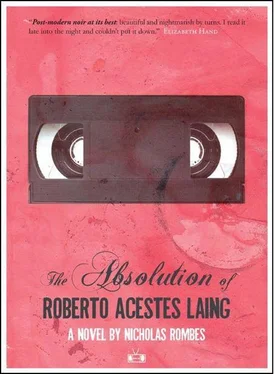
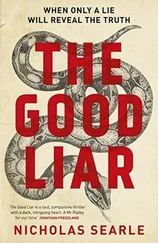
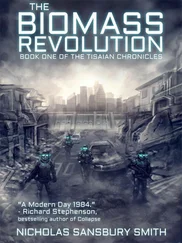
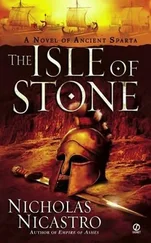
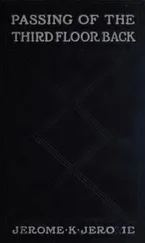

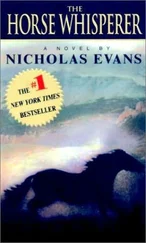
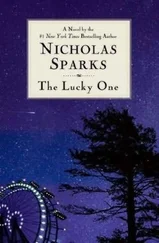
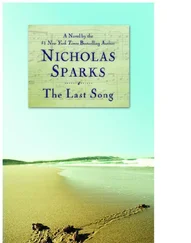
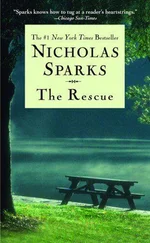
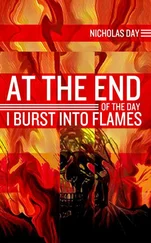

![Nicholas Timmins - The Five Giants [New Edition] - A Biography of the Welfare State](/books/701739/nicholas-timmins-the-five-giants-new-edition-a-thumb.webp)